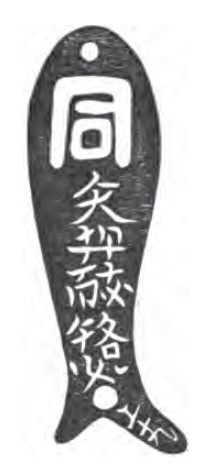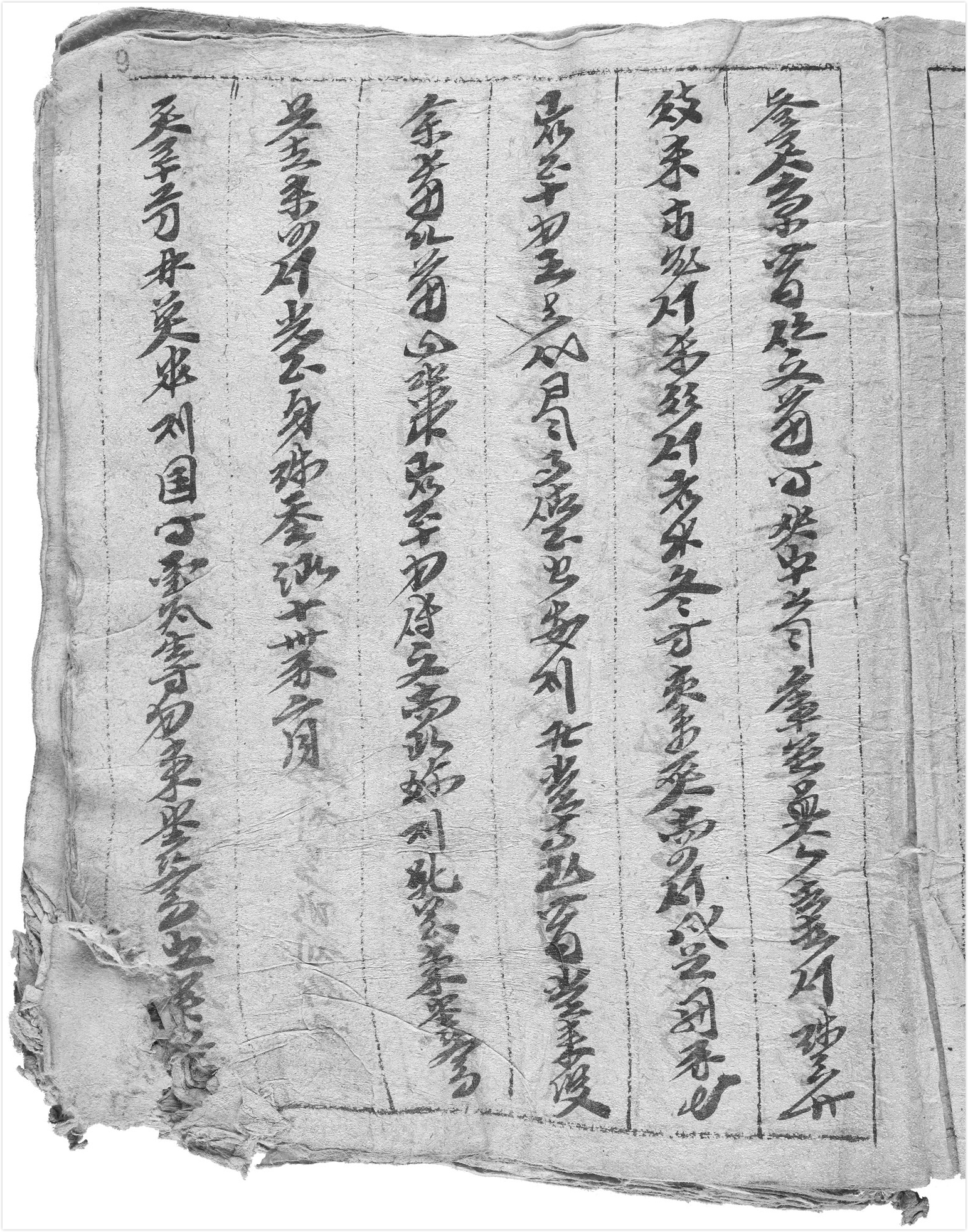|
Yelü Diela
Yelü Diela () was the younger brother of the Liao dynasty founder Yelü Abaoji. He invented the "Khitan small script" to accommodate the more agglutinative Khitan language around the year 925. The script was based partly on the earlier "Khitan large script" or Chinese-like logographic writing, but was also inspired by the vertically written Old Uyghur alphabet that was shown to him by an ambassador.History of Liao History is the systematic study of the past, focusing primarily on the human past. As an academic discipline, it analyses and interprets evidence to construct narratives about what happened and explain why it happened. Some theorists categ ..., Chapter 64 (《辽史 第六十四卷 表第二 皇子表》) References External linksLiao (Khitan) literature and script Creators of writing systems Year of death unknown Year of birth unknown {{Writingsystem-stub Diela 10th-century Khitan people 10th-century linguists ... [...More Info...] [...Related Items...] OR: [Wikipedia] [Google] [Baidu] |
Abaoji
Abaoji (872 – 6 September 926), posthumously known by his temple name as the Emperor Taizu of Liao, was a Khitan leader and the founding emperor of the Liao dynasty of China, ruling from 916 to 926. He had a sinicised name, Yelü Yi; some sources suggest that Abaoji's family name, Yelü, was adopted during his lifetime, although there is no consensus amongst historians on this point. Abaoji was born in 872 in Southern Mongolia and had a turbulent childhood. His grandfather was killed in a conflict between tribes, and his father and uncles fled. He was hidden by his grandmother for his safety. He became khagan of the Khitans on 27 February 907, and was subsequently enthroned as emperor in 916, proclaiming his own era name. He died on 6 September 926. He was responsible for the conquest and unification of all of Inner Mongolia, northern China and southern Manchuria. After the Khitan Empire became the Liao dynasty in 942, Abaoji was posthumously considered a Liao emperor. L ... [...More Info...] [...Related Items...] OR: [Wikipedia] [Google] [Baidu] |
Khitan Small Script
The Khitan small script () was one of two writing systems used for the now-extinct Khitan language. It was used during the 10th–12th century by the Khitan people, who had created the Liao Empire in present-day northeastern China. In addition to the small script, the Khitans simultaneously also used a functionally independent writing system known as the Khitan large script. Both Khitan scripts continued to be in use to some extent by the Jurchens for several decades after the fall of the Liao dynasty, until the Jurchens fully switched to a script of their own. Examples of the scripts appeared most often on epitaphs and monuments, although other fragments sometimes surface. History The Khitan small script was invented in about 924 or 925 CE by a scholar named Yelü Diela. He drew his inspiration from "the Uyghur language and script", which he was shown by a visiting Uyghur ambassador at the Khitan court. For this reason, Khitan small script was originally thought to be a daughter ... [...More Info...] [...Related Items...] OR: [Wikipedia] [Google] [Baidu] |
Agglutinative
In linguistics, agglutination is a morphological process in which words are formed by stringing together morphemes (word parts), each of which corresponds to a single syntactic feature. Languages that use agglutination widely are called agglutinative languages. For example, in the agglutinative Turkish, the word ("from your houses") consists of the morphemes ''ev-ler-i-n-iz-den''. Agglutinative languages are often contrasted with isolating languages, in which words are monomorphemic, and fusional languages, in which words can be complex, but morphemes may correspond to multiple features. Examples of agglutinative languages Although agglutination is characteristic of certain language families, this does not mean that when several languages in a certain geographic area are all agglutinative they are necessarily related phylogenetically. In the past, this assumption led linguists to propose the so-called Ural–Altaic language family, which included the Uralic and Turkic lang ... [...More Info...] [...Related Items...] OR: [Wikipedia] [Google] [Baidu] |
Khitan Language
Khitan or Kitan ( in large Khitan script, large script or in small Khitan script, small, ''Khitai''; , ''Qìdānyǔ''), also known as Liao, is an extinct language once spoken in Northeast Asia by the Khitan people (4th to 13th century CE). It was the official language of the Liao dynasty, Liao Empire (907–1125) and the Qara Khitai (1124–1218). Owing to a narrow corpus of known words and a partially undeciphered script, the language has yet to be completely reconstructed. Classification Khitan appears to have been related to the Mongolic languages; Juha Janhunen states: "Today, however, the conception is gaining support that Khitan was a language in some respects radically different from the historically known Mongolic languages. If this view proves to be correct, Khitan is, indeed, best classified as a Para-Mongolic languages, Para-Mongolic language." Alexander Vovin (2017) argues that Khitan has several Koreanic languages, Koreanic loanwords. Since both the Korean Goryeo dy ... [...More Info...] [...Related Items...] OR: [Wikipedia] [Google] [Baidu] |
Khitan Large Script
The Khitan large script () was one of two writing systems used for the now-extinct Khitan language (the other was the Khitan small script). It was used during the 10th–12th centuries by the Khitan people, who had created the Liao Empire in north-eastern China. In addition to the large script, the Khitans simultaneously also used a functionally independent writing system known as the Khitan small script. Both Khitan scripts continued to be in use to some extent by the Jurchens for several decades after the fall of the Liao dynasty, until the Jurchens fully switched to a script of their own. Examples of the scripts appeared most often on epitaphs and monuments, although other fragments sometimes surface. History Abaoji of the Yelü clan, founder of the Khitan, or Liao, dynasty, introduced the original Khitan script in 920 CE. The "large script", or "big characters" (), as it was referred to in some Chinese sources, was established to keep the record of the new Khitan state ... [...More Info...] [...Related Items...] OR: [Wikipedia] [Google] [Baidu] |
Logographic
In a written language, a logogram (from Ancient Greek 'word', and 'that which is drawn or written'), also logograph or lexigraph, is a written character that represents a semantic component of a language, such as a word or morpheme. Chinese characters as used in Written Chinese, Chinese as well as other languages are logograms, as are Egyptian hieroglyphs and characters in cuneiform script. A writing system that primarily uses logograms is called a ''logography''. Non-logographic writing systems, such as alphabets and syllabaries, are ''phonemic'': their individual symbols represent sounds directly and lack any inherent meaning. However, all known logographies have some phonetic component, generally based on the rebus principle, and the addition of a phonetic component to pure ideographs is considered to be a key innovation in enabling the writing system to adequately encode human language. Types of logographic systems Some of the earliest recorded writing systems are logograp ... [...More Info...] [...Related Items...] OR: [Wikipedia] [Google] [Baidu] |
Old Uyghur Alphabet
The Old Uyghur alphabet was a list of alphabets used by Turkic languages, Turkic script used for writing Old Uyghur, a variety of Old Turkic spoken in Turpan and Gansu that is the ancestor of the modern Western Yugur language. The term "Old Uyghur" used for this alphabet is misleading because Qocho, the Yugur, Uyghur (Yugur) kingdom created in 843, originally used the Old Turkic alphabet. The Uyghur adopted this "Old Uyghur" script from local inhabitants when they migrated into Turfan after 840. It was an adaptation of the Aramaic alphabet used for texts with Buddhism, Buddhist, Manichaeism, Manichaean and Church of the East, Christian content for 700–800 years in Turpan. The last known manuscripts are dated to the 18th century. This was the prototype for the Mongolian script, Mongolian and Manchu alphabets. The Old Uyghur alphabet was brought to Mongolia by Tata-tonga. The Old Uyghur script was used between the 8th and 17th centuries primarily in the Tarim Basin of Central As ... [...More Info...] [...Related Items...] OR: [Wikipedia] [Google] [Baidu] |
History Of Liao
History is the systematic study of the past, focusing primarily on the human past. As an academic discipline, it analyses and interprets evidence to construct narratives about what happened and explain why it happened. Some theorists categorize history as a social science, while others see it as part of the humanities or consider it a hybrid discipline. Similar debates surround the purpose of history—for example, whether its main aim is theoretical, to uncover the truth, or practical, to learn lessons from the past. In a more general sense, the term ''history'' refers not to an academic field but to the past itself, times in the past, or to individual texts about the past. Historical research relies on primary and secondary sources to reconstruct past events and validate interpretations. Source criticism is used to evaluate these sources, assessing their authenticity, content, and reliability. Historians strive to integrate the perspectives of several sources to develop ... [...More Info...] [...Related Items...] OR: [Wikipedia] [Google] [Baidu] |
Year Of Death Unknown
A year is a unit of time based on how long it takes the Earth to orbit the Sun. In scientific use, the tropical year (approximately 365 solar days, 5 hours, 48 minutes, 45 seconds) and the sidereal year (about 20 minutes longer) are more exact. The modern calendar year, as reckoned according to the Gregorian calendar, approximates the tropical year by using a system of leap years. The term 'year' is also used to indicate other periods of roughly similar duration, such as the lunar year (a roughly 354-day cycle of twelve of the Moon's phasessee lunar calendar), as well as periods loosely associated with the calendar or astronomical year, such as the seasonal year, the fiscal year, the academic year, etc. Due to the Earth's axial tilt, the course of a year sees the passing of the seasons, marked by changes in weather, the hours of daylight, and, consequently, vegetation and soil fertility. In temperate and subpolar regions around the planet, four seasons ar ... [...More Info...] [...Related Items...] OR: [Wikipedia] [Google] [Baidu] |






